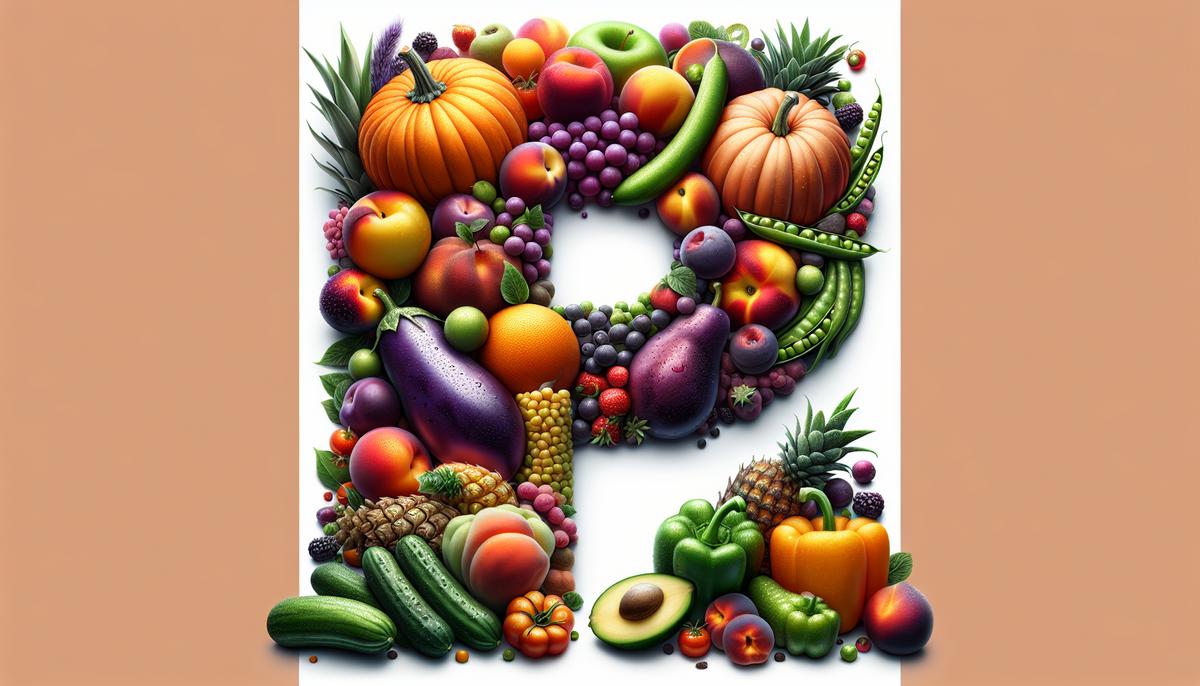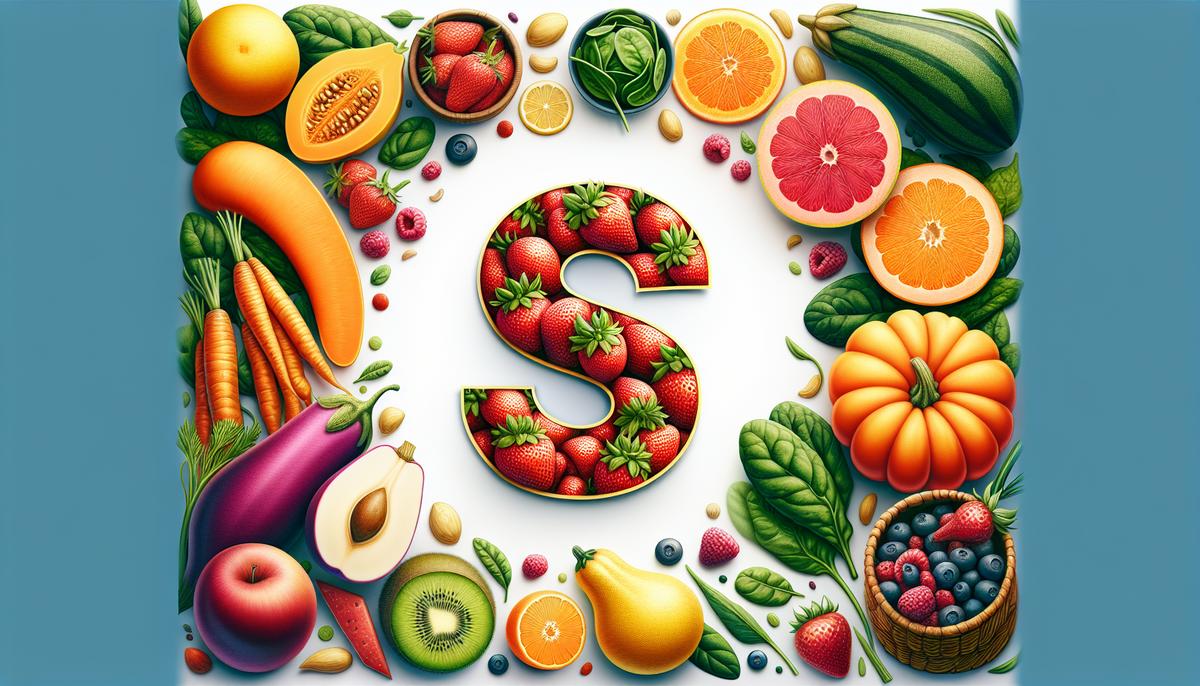Eating a variety of fruits and vegetables is key to maintaining a balanced diet, and it can be both fun and delicious to experiment with different kinds. Today, we’re focusing on fruits and vegetables that start with the letter ‘F’. From the exotic Feijoa to the humble French beans, there’s a whole array of options that not only pack a nutritional punch but also offer diverse culinary possibilities. Let’s explore these delightful fruits and vegetables, learning about their nutritional benefits and how you can incorporate them into your meals.
Fruits that start with F
Feijoa
Feijoa, also known as pineapple guava, is a sweet and tangy fruit native to South America. Its unique flavor profile, reminiscent of a blend between pineapple, guava, and mint, makes it a refreshing treat. The fruit is about the size of an egg and has a green, slightly bumpy skin that encases a fragrant, juicy pulp dotted with small seeds.
Feijoa is a nutritional powerhouse. It’s rich in vitamin C, which boosts the immune system, and dietary fiber, which aids digestion. The fruit also contains significant amounts of potassium and magnesium, essential for heart health. Additionally, its antioxidants can help combat oxidative stress, contributing to overall wellness.
In the kitchen, Feijoa can be enjoyed in various ways. You can scoop out the pulp and eat it fresh or add it to fruit salads for an exotic twist. It also works beautifully in smoothies, jams, and desserts like sorbets and cakes. For a savory option, try pairing Feijoa with cheese or incorporating it into chutneys to serve alongside grilled meats.
Fresh Figs
Fresh figs are a delectable fruit with a sweet, honey-like flavor and a soft, chewy texture. Originating from the Mediterranean and Western Asia, figs have been cherished for centuries for their taste and versatility. The fruit can be enjoyed both fresh and dried, making it a staple in many culinary traditions.
Nutritionally, fresh figs are a great source of dietary fiber, which helps maintain digestive health and can aid in weight management. They are also rich in vitamins A and K, as well as minerals like potassium, calcium, and magnesium. Figs provide antioxidants, which can protect against free radicals and promote overall health.
Culinary uses for fresh figs are endless. They can be eaten on their own as a snack or added to salads for a burst of sweetness. Figs pair wonderfully with cheese, making them a perfect addition to charcuterie boards. They can also be baked into tarts, roasted with honey and nuts, or used to make fig preserves. For a savory application, try wrapping fresh figs in prosciutto and grilling them for a delightful appetizer.
Vegetables that start with F
Fava Beans
Fava beans, also known as broad beans, are a staple in many cuisines around the globe. These large, flat beans are encased in thick pods and have a slightly sweet, earthy flavor. They require some preparation, including removing them from their pods and blanching to remove the tough outer skin of each bean.
From a nutritional standpoint, fava beans are an excellent source of plant-based protein, making them a valuable addition to vegetarian and vegan diets. They are also rich in fiber, iron, and B vitamins, particularly folate, which is essential for cell growth and development. The beans contain antioxidants and are beneficial for heart health due to their high potassium content.
Fava beans are incredibly versatile in the kitchen. They can be boiled and tossed in salads, blended into dips like the Middle Eastern “Bessara,” or sautéed with garlic and olive oil for a simple side dish. They are also a key ingredient in the traditional Italian dish “Vignarola,” a spring vegetable stew. Try adding them to soups, stews, and risottos for added texture and flavor.
Fennel
Fennel is a unique vegetable with a crunchy texture and a slightly sweet, licorice-like flavor. The bulb, stalks, and fronds of the fennel plant are all edible, each offering distinct culinary uses. Native to the Mediterranean region, fennel has been used in both cooking and traditional medicine for centuries.
Nutritionally, fennel is low in calories but high in fiber, making it a great addition to a weight-conscious diet. It is an excellent source of vitamin C, which supports the immune system, and contains significant amounts of potassium, important for blood pressure regulation. Fennel also provides various antioxidants and phytonutrients that can help reduce inflammation.
Fennel can be enjoyed raw or cooked. Thinly sliced raw fennel adds a refreshing crunch to salads and slaws. When cooked, fennel becomes tender and its flavor mellows, making it a wonderful addition to roasted vegetable medleys, soups, and stews. Try braising fennel with a bit of white wine and garlic for a delicious side dish or incorporating it into pasta dishes for a unique twist.
Fiddlehead Ferns
Fiddlehead ferns are the young, coiled fronds of certain fern species, resembling the head of a fiddle. These seasonal delicacies are typically harvested in the spring and have a flavor that is often described as a cross between asparagus and spinach, with a slightly nutty undertone.
Nutritionally, fiddlehead ferns are a good source of vitamins A and C, both of which are important for immune function and skin health. They also provide manganese, iron, and fiber. The antioxidants found in fiddleheads can help protect cells from damage, and their omega-3 fatty acids contribute to heart health.
In culinary terms, fiddlehead ferns need to be cooked properly to eliminate any potential toxins. They can be steamed, boiled, or sautéed and are often used in stir-fries, soups, and salads. Try tossing them with garlic, lemon, and olive oil for a simple yet delicious side dish. They also pair well with eggs, making them a great addition to frittatas and omelets.
Fingerling Potatoes
Fingerling potatoes are small, elongated tubers that come in various colors, including yellow, red, and purple. Their firm, waxy texture and rich, nutty flavor make them a favorite among chefs and home cooks alike. These potatoes are often more flavorful than their larger counterparts and require minimal preparation.
When it comes to nutrition, fingerling potatoes are a good source of complex carbohydrates, which provide sustained energy. They are also rich in potassium, which is vital for muscle function and blood pressure control. Fingerling potatoes contain vitamin C, B vitamins, and antioxidants, contributing to overall health and well-being.
Fingerling potatoes can be roasted, boiled, or grilled to perfection. Their small size makes them ideal for roasting whole, often with a bit of olive oil, salt, and herbs for a simple yet delicious dish. They can also be used in potato salads, added to stews, or served as a crispy side dish. Try pairing them with roasted meats or tossing them with fresh herbs and lemon for a refreshing twist.
French Beans
French beans, also known as green beans or haricots verts, are slender and tender with a slightly sweet flavor. They are a popular vegetable in many cuisines, appreciated for their versatility and ease of preparation. These beans are typically harvested when they are young and tender, ensuring a crisp texture.
Nutritionally, French beans are low in calories but high in fiber, making them an excellent choice for a healthy diet. They are a good source of vitamins A, C, and K, as well as folate and manganese. French beans also provide antioxidants, which can help reduce inflammation and promote overall health.
In the kitchen, French beans can be steamed, boiled, sautéed, or roasted. They make a great addition to salads, stir-fries, and casseroles. For a classic dish, try sautéing them with garlic and almonds or tossing them with a bit of butter and fresh herbs. French beans also pair well with tomatoes and can be used in Mediterranean-style dishes like “Salade Niçoise.”
Fresh Chanterelle Mushrooms
Chanterelle mushrooms are prized for their delicate flavor and slightly fruity aroma. These wild mushrooms have a distinctive trumpet shape and a golden-yellow color, making them a visually appealing addition to many dishes. They are typically found in forests during the late summer and fall.
Chanterelle mushrooms are not only delicious but also offer nutritional benefits. They are low in calories and a good source of vitamins D and B, particularly B12, which is important for nerve function and energy production. Chanterelles also provide essential minerals like copper and potassium and contain antioxidants that support overall health.
In culinary applications, chanterelle mushrooms are incredibly versatile. They can be sautéed with garlic and herbs, added to pasta dishes, or used as a topping for pizzas and flatbreads. Their delicate flavor pairs well with creamy sauces and can elevate simple dishes like scrambled eggs or risottos. For a gourmet touch, try incorporating chanterelles into soups or serving them alongside roasted meats.




